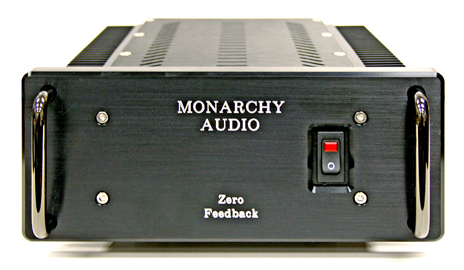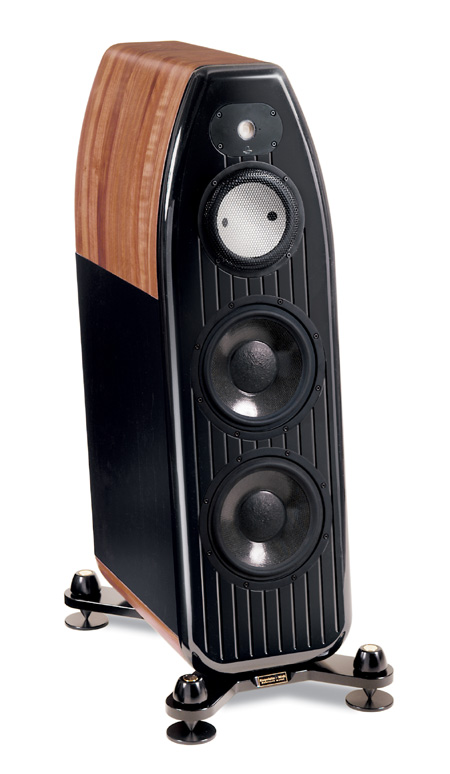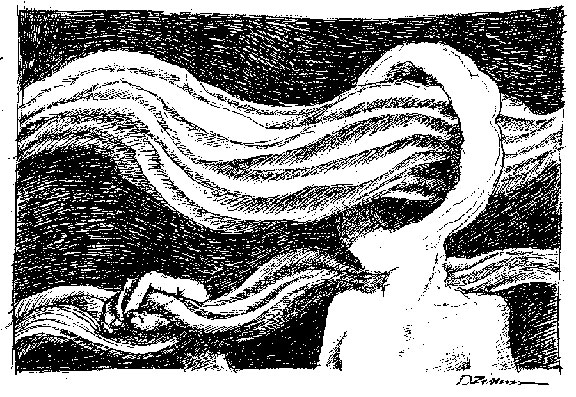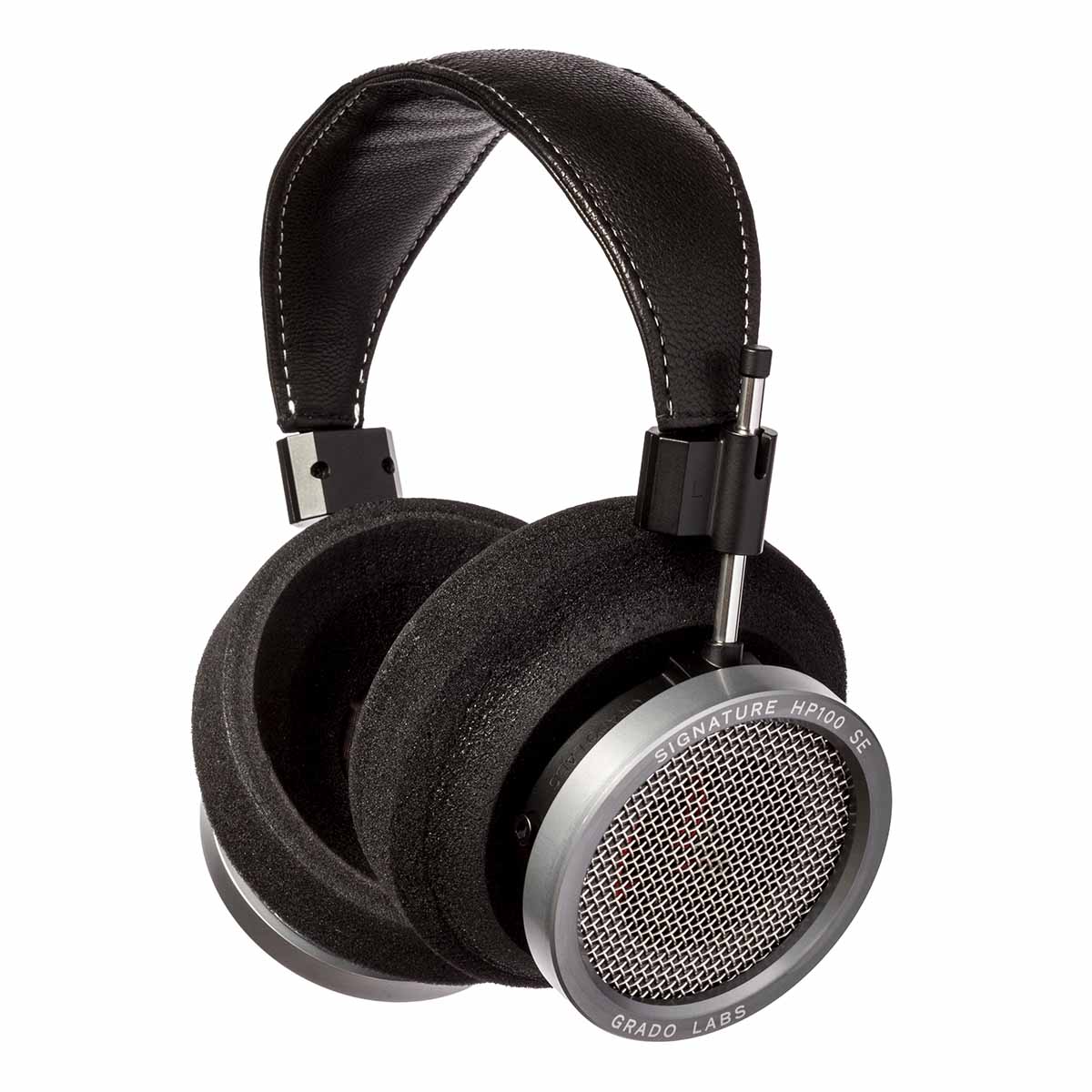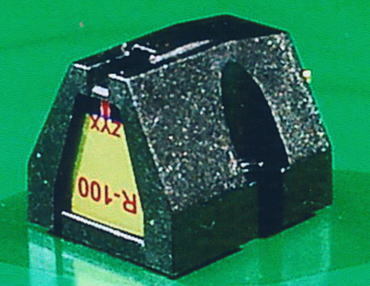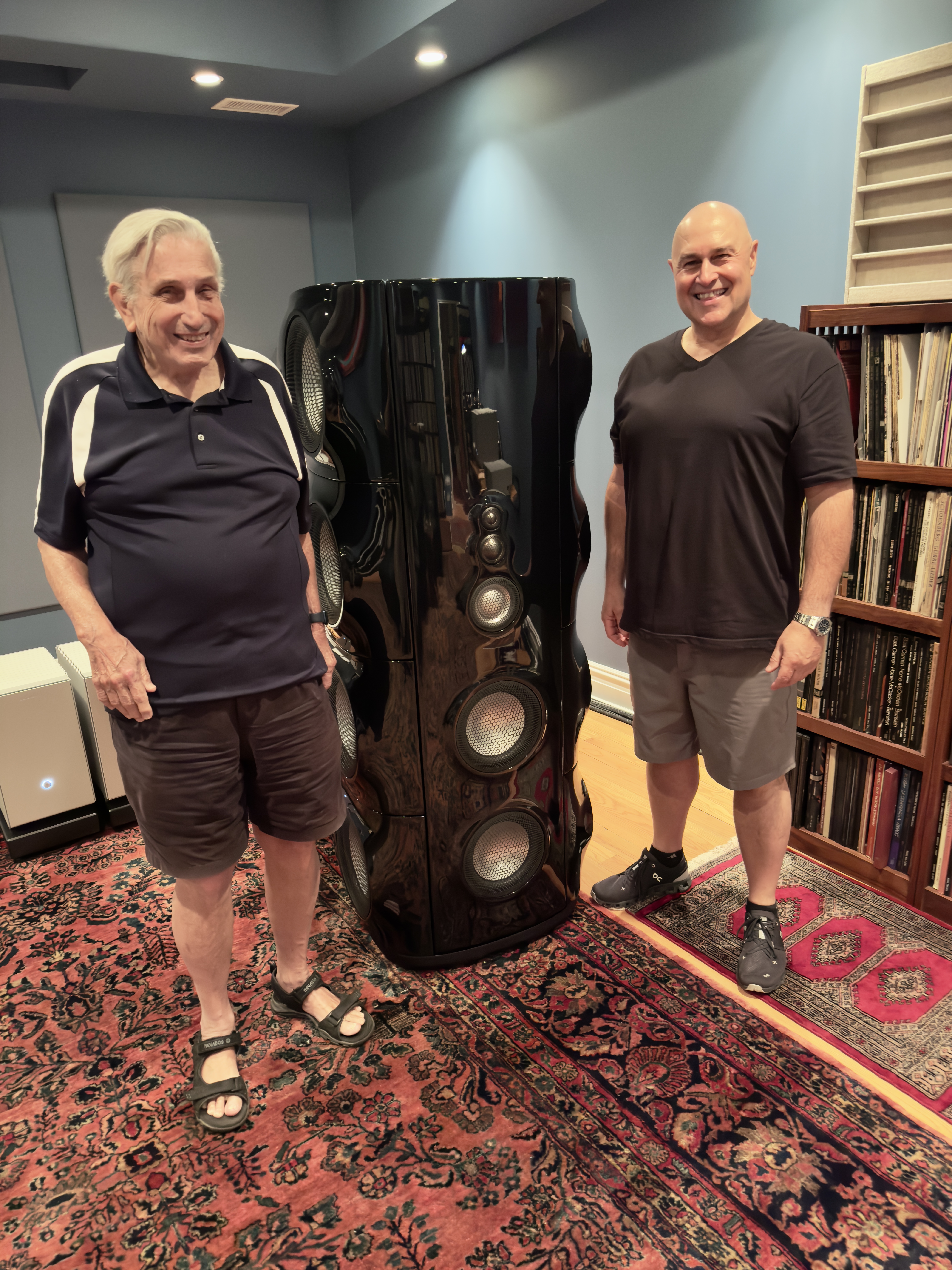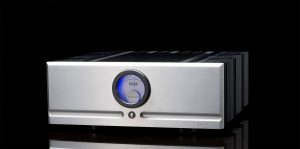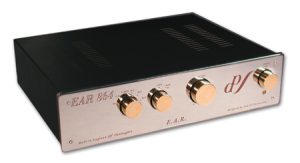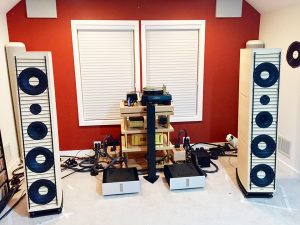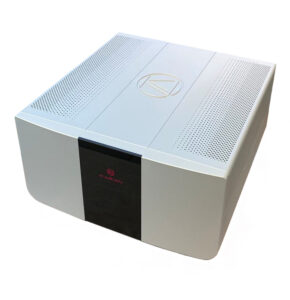This article, as reviewed by Francisco Duran, Victor Chavira, Carol Clark, and Dave Clark originally ran in Issue 2, August/September 2002, so while we call this section "New Old Stock - Articles from Our Days in Print" you are also going to see some articles from our early days of going online.
Back in Issue 10 of audioMUSINGS, I wrote about the Monarchy SM-70 amplifier that I had purchased. In rereading that article, I realize that I was being very enthusiastic, and justifiably so—the little SM-70 packs a lot of music in a small box. One SM-70 running in stereo drives my speakers pretty well, but as I said I would, I purchased another one, and have been running them as mono blocks for some time. This increased the power from 25 WPC to a more muscular 70 WPC, and the change was not subtle. The increase in power brought on an increase in dynamics and better control of the music. I thought I was happy with a single SM-70, but the power and finesse brought by a second amp is very pleasing.
Now, seventy watts is plenty of muscle to drive most speakers, but what about the person who needs more power? Monarchy Audio has come up with the solution in the SM-70 Pro. The Pro version of this amp brings a slightly wider chassis (mostly due to the heat sinks), a heavier amp by four pounds, and more power. The increase in power from a regular SM-70 is from 25 to 30 WPC in stereo mode, and from 75 to 100 wpc in mono. This is mainly achieved by doubling the input drivers and output MOSFETs, and using a larger toroidal power transformer. The SM-70 Pro is also outfitted with higher-value filter capacitors and double rectifiers. With all of this, it's a wonder that the chassis hasn't doubled in size, but miraculously it hasn't.
When the SM-70 Pros were on hand, so were the big, velvety-smooth Soliloquy 6.3s, which are 90dB efficient, with a nominal 8 ohm impedance. Also hanging around, of course, were my own ProAc speakers, which present an 87dB load, and have a pretty even impedance. Although a pair of multi-way speakers may be very efficient, it always seems that a higher-wattage amp controls all those drivers more easily. For instance, I felt that I got better results with the extremely efficient Loth-X Ion 4 speakers with the Musical Design DM 100B's 100 watts than with the Welborne Apollos' 22. The Musical Design amp controlled the Loth-Xs better during dynamic swings, and it had better extension. I also felt that the Loth-X/Musical Design combination was a better match harmonically. I know that the Loth-Xs only have single drivers, but Victor Chavira can tell you how a pair of SM-70 Pros worked on his harder-to-drive Magnepans, and I will leave it up to Dave and Carol Clark to tell you how the little Pros drove their huge, efficient multi-way Reimers.
The same logic applies to the Soliloquy and ProAc speakers. While a single SM-70 did an okay job, a pair was even better, and a single SM-70 Pro was noticeably more powerful compared to the regular SM-70. A pair of the Pros was the ticket. Instead of going on about power, though, I should talk about the sound. The regular and Pro versions of the SM-70 sound pretty much the same, with the Pros having the edge in overall authority. The SM-70 amps have a harmonic rightness that is very appealing. For instance, I have several blues albums which feature just vocals and guitar throughout—Jimmie Lee Robinson and Little Hatch on Analogue Productions, John Lee Hooker's The Real Folk Blues, and the Lightning Hopkins disc, which by the way was recorded by none other than Rudy Van Gelder back in 1960 on the Prestige label. And I can't forget my main men, Buddy Guy and Junior Wells. The recording quality on these CDs varies from better than okay to very good, but the quality that comes through the Monarchy SM-70s in this mostly-midrange music fest, besides great blues, is a natural rendering of vocals and guitar. If the recording is decent, you'll hear vocals that are not thin or squeezed. You can tell that there is a pair of lungs behind the voices. Guitars have a decent semblance of body, and the string plucks are clear cut. I know that a tube amp does a lot better in reproducing a sense of the body of an instrument, but considering the price of the Monarchy amps, this aspect of their performance was not bad at all.
Their naturalness of tone extended to the brass and woodwind sections of an orchestra as well. Brass instruments had bite and dynamics, but never lost correct timbre. Woodwinds displayed a natural texture, but were clean and airy. I did hear a slight thinness in the upper mids through lower treble through my ProAcs, but I put the blame on the speakers. When I switched to the Soliloquy 6.3s I heard no such thing. In fact, the pairing of the Soliloquy 6.3s—or the stand-mounted 5.0s—with the Monarchy amps made for a very synergistic match. Compared to the big Clayton mono blocks, the Monarchys do sound a smidgen thin, but as I said in my review of the Claytons, look at the price difference. While we are on the subject of matching components, a pairing that I would advise against (at least in my system) is the Monarchy amps and the Nordost Blue Heaven interconnects. This was especially true with the ProAc speakers. The sound was slightly thin and too bright for my tastes. An all-JPS set of cabling proved to be a great match in my system.
The SM-70 Pros definitely have the advantage over the regular SM-70s in dynamics, authority, and overall control over the speakers. The Pros also sounded a bit more open, and I felt that I was better able to hear into the recording. I thought the regular SM-70s sounded a bit sweeter. I also felt that they were just a little bit slower-sounding. That last comment you can take with a grain of salt. The fact that the Pros have more parts in them might account for the difference. The Pro SM-70 amps have more muscle, but with their musical signature definitely intact.
FRANCISCO DURAN'S SYSTEM
LOUDSPEAKERS
ProAc Response 2s.
ELECTRONICS
Reference Line Preeminence IA passive. Monarchy SM-70 amplifiers.
SOURCE
EAD DSP 1000 III DAC.
Pioneer DP 54 as a transport.
CABLES
Kimber Hero interconnects, Acrotec 1050 speaker cables, and LAT digital cable.
ACCESSORIES
Panamax PLC.
The sound was deafening, and she was tired. She closed her eyes. If only they could go back to the relative peace and quiet of the hotel. Of course, they couldn't, and she knew it. Every night it was much the same. With a deep sigh, she opened her eyes, scanning the room for a friendly face. At last her eyes rested on Christian, and with a small smile, she stood up from the table and approached him. His eyes were bright and clear, not dull and lifeless like all the others, including her own. She slipped into an empty chair next to him, bending close so he could hear her over the loud music.
"You come here often?" she asked with a smile.
Wait a minute. Oh, I'm sorry, this is not a work of fiction, this is an amplifier review! I have been so caught up in writing fiction lately that I have forgotten what it is like to write "serious" articles. This leads to my assessment of the Monarchy SM-70 amps. I listened to them recently, and had a hard time concentrating. The character named Christian in one of my works of fiction kept playing around in the back of my mind, calling me back to the computer. He made me so angry I almost smacked him, but restrained myself. I wonder what he would say if I asked him to tell you about the amps?
"The Monarchy amps sound pretty good. The soundstage is full, stretches well past the edges of the speakers, and is quite deep." (He is an audiophile, so it seems.) "They seemed a bit boomy in the bass, so we changed the music quite frequently, listening to all kinds. It seemed possible that the boomy sound was inherent in the recordings we chose." (Not only an audiophile, but a well-spoken one!)
"Of course, I was not consulted about the music choices, they were Carol's, but I was able to adapt quite nicely. She chose several of her standby recordings, including Toward the Within by Dead Can Dance. We listened to three tracks, but unfortunately the recording is quite uneven, and only one track sounded halfway decent. That track, "Don't Fade Away," features the smoky vocals of Brendan Perry. It sounded fantastic, and Carol confided to me that it sounded every bit as good as her normal setup. She also said that the other two tracks sound dismal whenever she listens to them."
"Next, we listened to Nine Inch Nails. She says she likes them quite a bit, but I was dubious. However, she informed me that aside from having to crank the volume up substantially, this track also sounded comparable to what she hears with her Clayton amps."
"I requested a few tracks, and she consented to let me listen to my favorite, The Experiment, the soundtrack to a British movie called What Goes Up. Compared to what I'm used to, which sadly is only a very low-fi system, this really kicked ass. Is it OK if I say that? I am seriously thinking I will need to upgrade my system, so I asked how much these things cost. I am astounded when she tells me the reasonable price! I think I will definitely have to check this out!"
Thank you, Christian for that review, and now let me add this. Did I like these amps better than what I currently own? The answer is no, not really. They sounded really good, comparable to my current amps, but that's where the kicker comes in. My Clayton amps cost three times as much as these Monarchy amps. For someone starting out, like my hapless fiction character, these would be an excellent place to start. They have all the muscle of more expensive equipment, but at a fraction of the cost.
A few days later, however, I listened to the same music with my Claytons. Christian did not make an appearance this time. Why, you ask? Mainly because the sound was better, and I wasn't distracted enough to think about him. All the changes we've made in the system during this time period, mostly of the tweak variety (see my Peter Belt article), have really refined the sound of our standard setup, and I find that I now anxiously look forward to listening to music.
CAROL CLARK'S SYSTEM
LOUDSPEAKERS
Reimer Wind River.
ELECTRONICS
Clayton Audio M70 monoblock amplifiers. E.A.R. 834P phono stage. Blue Circle BC3 preamp w/Amperex BB tubes, and BCG3.1 power supply.
Taddeo Digital Antidote Two and the HRS unit.
SOURCES
EAD T1000 transport and 1000 Series II DAC with Audient Technologies' Tactic and Audit, Nordost Moonglo digital cable. Linn Axiss turntable with K9 cartridge and Basik Plus arm.
CABLES
Nordost Blue Heaven and SPM interconnects, and SPM or Hovland Nine Line bi-wired speaker cables. Sahuaro, Blue Circle, Custom House, and Clayton Audio AC cables.
ACCESSORIES
Homebrewed ac conditioner for sources and the Coherent Systems Electraclear EAU-1 parallel conditioner. Dedicated 15 amp ac circuit for sources and 20 amp ac circuit for amplifiers. Mondo racks, BDR cones and board, DH cones, Vibrapods, various hard woods, etc. And a bottle of Rancho Sisquoc Merlot.
The Monarchy SM-70 amps are really a something of a marvel. At one sixth the size of our Clayton M70s and one third the price (but 30% more powerful—go figure!), the competition is tough and the law of diminishing returns really start to apply. The time I spent with these hot little beauties (they do run too hot to the touch for any length of time) was well spent, and showed just how much musical fun you can have for very little cash.
These little amps were fast, clean, and very dynamic. They can really get up and go. They are not quite as fleshed-out in the mids as the Claytons, nor do they have as much sheer musicality, but they were very much fun to listen to. Which is what it is all about. Imaging was spot on, and the soundspace was wide and deep, though the Claytons again revealed just what money can buy, offering a greater sense of space and air.
Minor quibbles would be that the lower bass is perhaps a bit too lean, and that the sound was slightly more analytical than harmonically rich and musical. None of this detracted from my enjoying the amps, but I do prefer a bit more body to my music. Another issue is the owner's manual, which could use a second look. I used these as mono amps, and the instructions as to how to hook them up this way leaves much to be desired. A clearer and more concise guide would allow the user less chance of hooking them up incorrectly. I am assuming I did not—they worked—but heck if I know whether I should have switched the speaker connections to another set of binding posts. The connections are not intuitive, but there was no smoke or flames! While they are small, here is one case where size doesn't matter. They had all the power and drive I could want. The SM-70s are really fun amps, and are will not dominate the room. Highly recommended.
DAVE CLARK'S SYSTEM
LOUDSPEAKERS
Reimer Wind River.
ELECTRONICS
Clayton Audio M70 monoblock amplifiers. E.A.R. 834P phono stage. Blue Circle BC3 preamp w/Amperex BB tubes, and BCG3.1 power supply.
Taddeo Digital Antidote Two and the HRS unit.
SOURCES
EAD T1000 transport and 1000 Series II DAC with Audient Technologies' Tactic and Audit, Nordost Moonglo digital cable. Linn Axiss turntable with K9 cartridge and Basik Plus arm.
CABLES
Nordost Blue Heaven and SPM interconnects, and SPM or Hovland Nine Line bi-wired speaker cables. Sahuaro, Blue Circle, Custom House, and Clayton Audio AC cables.
ACCESSORIES
Homebrewed ac conditioner for sources and the Coherent Systems Electraclear EAU-1 parallel conditioner. Dedicated 15 amp ac circuit for sources and 20 amp ac circuit for amplifiers. Mondo racks, BDR cones and board, DH cones, Vibrapods, various hard woods, etc. And a bottle of Rancho Sisquoc Merlot.
I was not originally slated to review the Monarchy Audio SM70 Pros, but Francisco Duran was curious about the sound of the Pros with my Magneplanar 1.6s. Since I was between reviews, I gladly obliged. Before the Pros were introduced into my system, I had to trim the output of my tubed CD1.The Pros have a very sensitive input stage, which makes them ideal for a passive system like Frank's. Once the level was adjusted, the Pros were connected to the variable output of my CD player with a two-meter length of Nordost Blue Heaven interconnect. Like most silicon-based amps, the Pros sounded cool and dry at first. After some time, however, they warmed up and sprang to life.
Frank pointed out that the Pros ran much hotter than his standard SM-70s, so much so that he found them uncomfortable to live with. I did not have the same experience. This is probably due in part to the fact that I am a tube user and have a higher tolerance for heat. We played several discs that afternoon, from acoustic blues to movie soundtracks. The mini-amps sounded impressive. They did not sound bright or edgy. Their grip on the panels was firmer than that of my Anthem Amp1, which is of equal wattage. True to their monoblock design, the Pros were superior to my reference with respect to stereo separation and soundstage depth. The Pros were also impressive with their musicality. Guitars and voices sounded detailed, delicate, and free from the hardness and tension that feedback designs tend to impart. The Pros were only slightly less capable of preserving the air around around voices and instruments than my Anthem.
That the Pros excelled at capturing dynamic shadings was illustrated by my CD of squawking parrots (Excited Animals Records SP001). Great care was taken in this recording, which uses only the latest mobile all-tube electronics to capture the sounds of parrots in their natural habitats. Our family keeps six beautiful, but extremely noisy parrots in our back yard. No other domestic animal is as capable of high-decibel outbursts as a military macaw. The Monarchy SM-70 Pros vividly reproduced the cacophony of squawking parrots in my listening room. (Okay, I made this part up, but the Monarchys do make music come to life!)
I found the SM-70 Pros to be impressive performers and an exceptional value. They mated surprisingly well with the Maggies. The baby 'blocks would not be out of place next to a speaker several times their price. As far as single ended, medium-power, fully-balanced, solid-state monoblocks are concerned, the Monarchy SM-70 Pros are in a class of their own. Recommended.
VICTOR CHAVIRA'S SYSTEM
LOUDSPEAKERS
Magneplanar 1.6.
ELECTRONICS
Sonic Frontiers Anthem 1 amplifier.
SOURCE
Audio Electronics CD1 player.
CABLES
Nordost Blue Heaven interconnects and speaker cable.
SM-70 Pro Amplifiers
Retail $980 each
Monarchy Audio
650. 873. 3055




